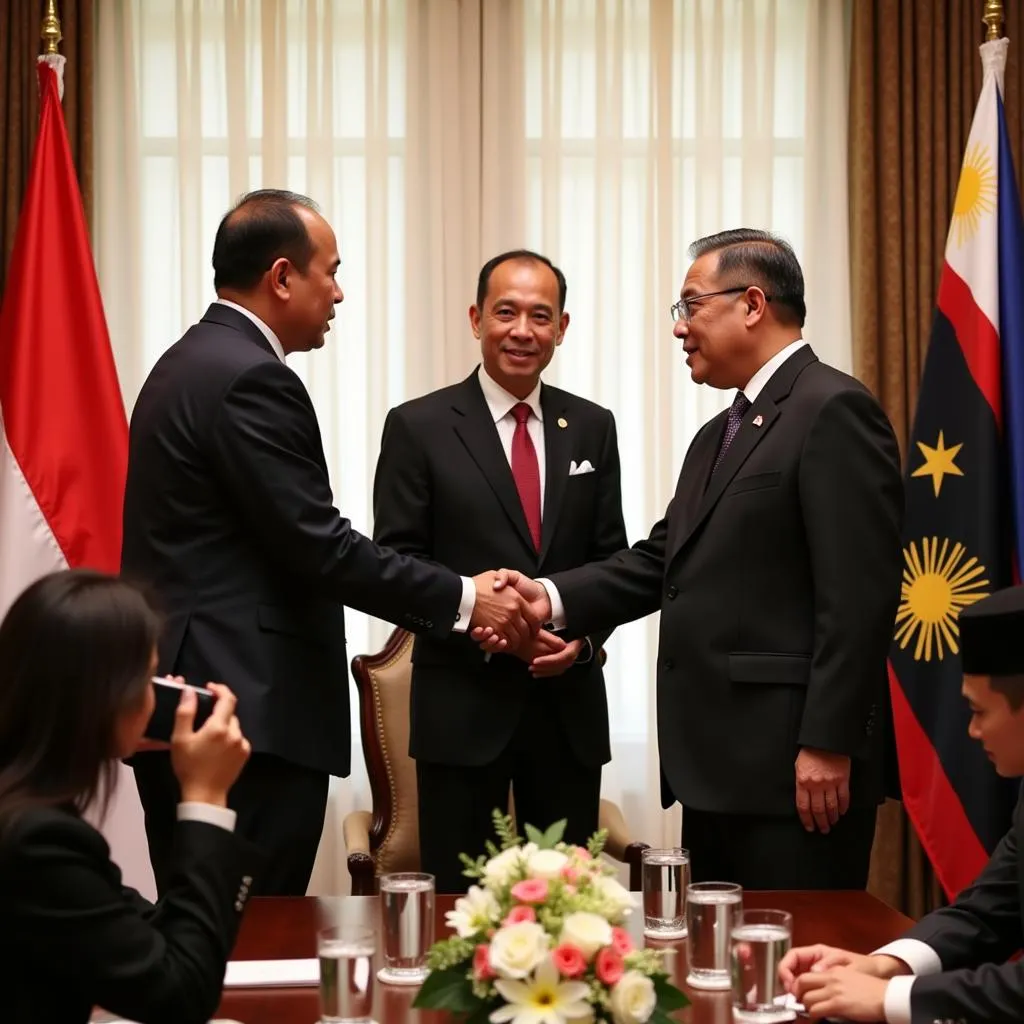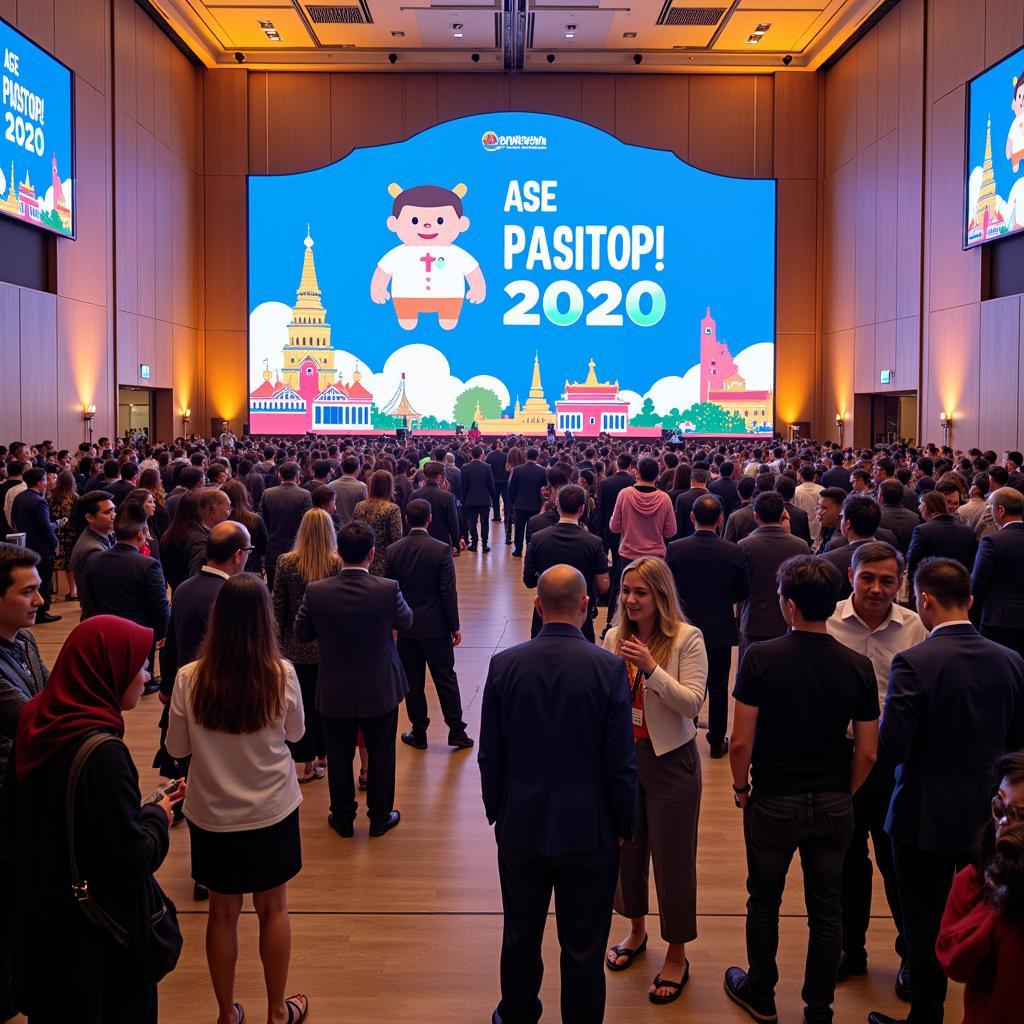Bokeh, the captivating aesthetic of blurred backgrounds in photography, is a powerful tool for artists to enhance their storytelling and create visually stunning images. In the context of Southeast Asia (ASEAN), this artistic technique transcends the realm of mere aesthetics, becoming a medium to capture the region’s diverse cultural landscapes and vibrant traditions. This article will delve into the fascinating intersection of ASEAN culture and bokeh photography, exploring how this technique can be used to highlight the region’s unique beauty and evoke a sense of wonder and connection.
Bokeh as a Window to ASEAN’s Cultural Diversity
ASEAN, encompassing 10 countries, boasts an incredible tapestry of cultures, traditions, and landscapes. From the bustling markets of Thailand to the serene temples of Cambodia, the region offers a visual feast for photographers. Bokeh, with its ability to isolate subjects and create a dreamy, ethereal atmosphere, becomes a perfect tool to showcase this cultural richness.
Imagine a photograph of a traditional Balinese dancer against a backdrop of lush rice paddies, where the background is gently blurred, drawing focus to the graceful movements and colorful costumes. This mesmerizing interplay of sharp focus and soft blur evokes a sense of tranquility and invites viewers to immerse themselves in the rich cultural heritage of Bali.
“Bokeh photography allows me to capture the essence of Southeast Asia’s cultural vibrancy without being overwhelmed by the details. It helps me to focus on the core elements of a scene, creating a sense of depth and intimacy.” – Anya Sharma, renowned ASEAN-based photographer
The Essence of ASEAN Culture Captured in Bokeh
How can bokeh photography effectively translate the nuances of ASEAN culture? By blurring out distracting elements, bokeh allows photographers to highlight the essential components of a scene, such as:
-
Color and Texture: The vibrant colors and intricate patterns of ASEAN textiles, traditional architecture, and religious artifacts are magnified when photographed using bokeh. The blurred background serves as a canvas, enhancing the vibrancy and depth of these cultural elements.
-
Movement and Emotion: Bokeh excels in capturing the energy and movement of traditional dances, festivals, and everyday life in ASEAN. The blur effect creates a sense of dynamism and allows photographers to convey the emotions of the moment.
-
Light and Shadow: The interplay of light and shadow plays a crucial role in ASEAN’s cultural expressions. Bokeh, with its ability to create soft transitions between light and dark areas, effectively portrays this interplay, adding an ethereal and poetic dimension to the images.
Beyond the Aesthetics: Storytelling through Bokeh
Bokeh photography goes beyond simply capturing beautiful visuals. It provides a powerful platform for storytelling and sharing the unique narratives of ASEAN.
Here’s how:
-
Creating a Sense of Place: By blurring out distracting elements, bokeh emphasizes the cultural elements that define a specific location within ASEAN. This helps viewers develop a deeper connection to the place and appreciate its cultural significance.
-
Eliciting Emotions: Bokeh can evoke a wide range of emotions, such as joy, serenity, nostalgia, and even a sense of longing. This allows photographers to create images that resonate deeply with viewers and leave a lasting impression.
-
Connecting Cultures: Bokeh photography has the power to bridge cultural gaps and foster understanding between people. When viewers see images that capture the beauty and essence of ASEAN’s diverse cultures, they are more likely to develop a sense of empathy and appreciation for the region.
Using Bokeh to Promote ASEAN Tourism
Bokeh photography has become an increasingly popular tool for promoting tourism in ASEAN. Its ability to create visually captivating images draws attention to the region’s diverse attractions and promotes a sense of adventure and exploration.
Here are some ways bokeh is being used to promote tourism in ASEAN:
-
Showcasing Iconic Landmarks: Bokeh photography highlights the beauty of iconic landmarks like the Angkor Wat temple complex in Cambodia or the Petronas Twin Towers in Malaysia, while blurring out the surrounding crowds, creating a sense of intimacy and tranquility.
-
Capturing the Beauty of Nature: From the lush rice paddies of Vietnam to the pristine beaches of the Philippines, bokeh photography beautifully captures the natural wonders of ASEAN, inviting travelers to explore these breathtaking landscapes.
-
Promoting Cultural Events: Bokeh photography is used to capture the vibrant energy and cultural significance of festivals and celebrations like the Songkran Festival in Thailand or the Hari Raya Aidilfitri celebrations in Indonesia, attracting tourists who seek authentic experiences.
Bokeh Photography: A Powerful Tool for Cultural Preservation
As ASEAN continues to modernize and urbanize, preserving its cultural heritage becomes increasingly important. Bokeh photography plays a crucial role in this endeavor by:
-
Documenting Cultural Traditions: Bokeh photography captures the details of traditional customs, ceremonies, and rituals, providing a visual record for future generations to learn from and appreciate.
-
Raising Awareness of Cultural Diversity: By showcasing the beauty and vibrancy of ASEAN’s diverse cultures, bokeh photography helps to raise awareness of the importance of cultural preservation and encourages respect and understanding across the region.
Conclusion
Bokeh photography offers a unique and powerful lens through which to explore and appreciate the diverse cultures of ASEAN. By blurring out distracting elements and highlighting the essential components of a scene, bokeh helps to capture the essence of the region’s vibrant traditions, stunning landscapes, and unique narratives. This artistic technique goes beyond mere aesthetics, serving as a valuable tool for storytelling, promoting tourism, and fostering cultural preservation. As ASEAN continues to evolve and connect with the world, bokeh photography will undoubtedly play an increasingly important role in showcasing the region’s rich cultural tapestry and inspiring a deeper understanding and appreciation for its unique identity.
FAQ
Q1: What are the key elements of ASEAN culture that bokeh photography can highlight?
A1: Bokeh can highlight the vibrant colors, intricate patterns, movement, and emotional expressions that are integral to ASEAN culture.
Q2: How can bokeh photography be used to promote tourism in ASEAN?
A2: Bokeh can showcase iconic landmarks, breathtaking landscapes, and cultural events, attracting tourists and encouraging them to explore ASEAN’s diverse attractions.
Q3: How does bokeh photography contribute to the preservation of ASEAN’s cultural heritage?
A3: Bokeh photography helps document traditional customs, raise awareness of cultural diversity, and inspire respect and understanding across the region.
Q4: What are some of the popular bokeh photography destinations in ASEAN?
A4: Popular destinations include the Angkor Wat temple complex in Cambodia, the Petronas Twin Towers in Malaysia, the rice paddies of Vietnam, and the beaches of the Philippines.
Q5: What are some tips for capturing stunning bokeh photographs in ASEAN?
A5: Use a wide aperture setting, experiment with different lighting conditions, and focus on the details that tell a story.
Q6: Where can I learn more about bokeh photography and its use in ASEAN?
A6: You can explore online resources, attend photography workshops, and connect with photographers who specialize in capturing ASEAN’s cultural landscapes.
Q7: How can I contribute to the preservation of ASEAN’s cultural heritage through photography?
A7: Share your photographs online, participate in cultural events, and educate others about the importance of preserving ASEAN’s diverse heritage.
Remember: Bokeh photography is a powerful tool for capturing the beauty and essence of ASEAN’s cultural heritage. By exploring this artistic technique, we can appreciate the region’s diverse traditions and contribute to its preservation for generations to come.


